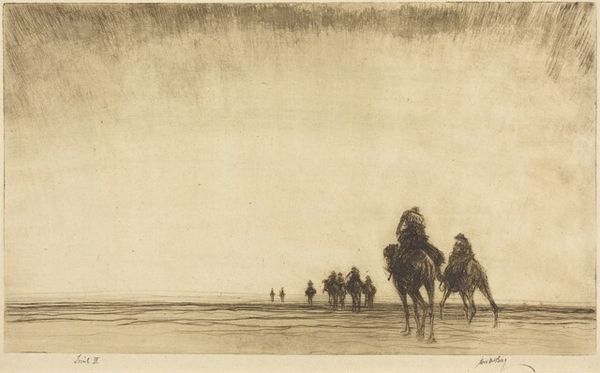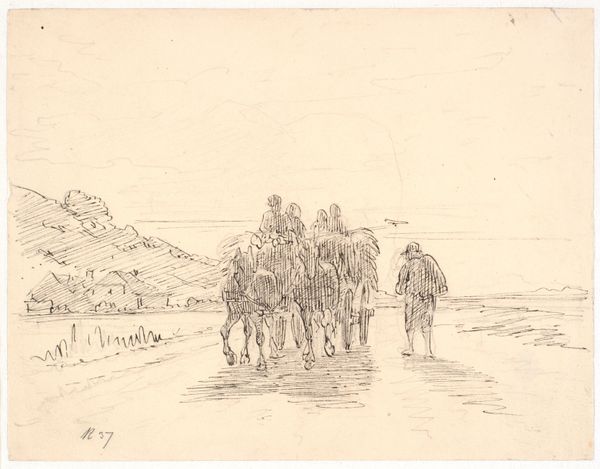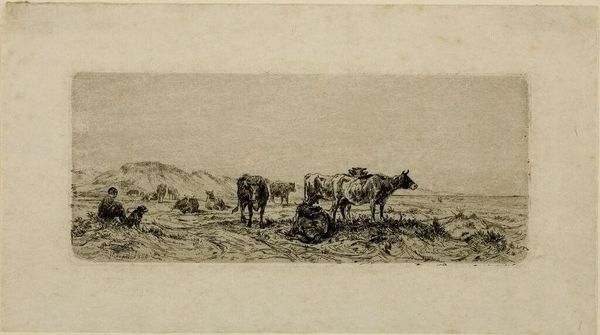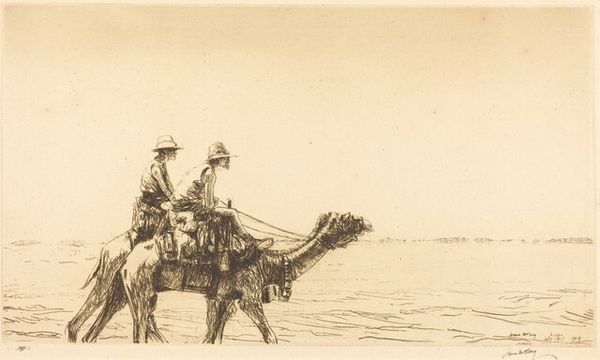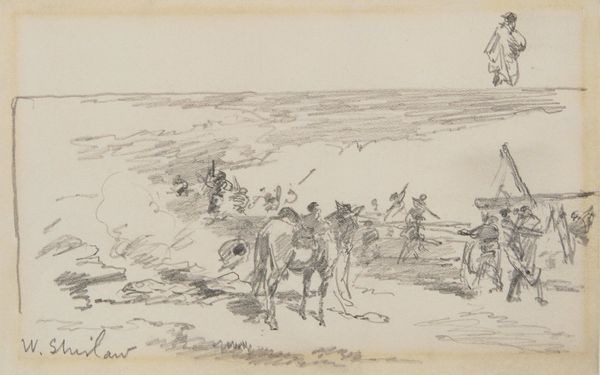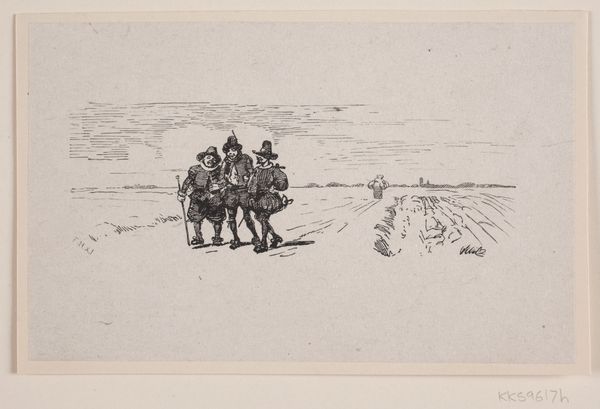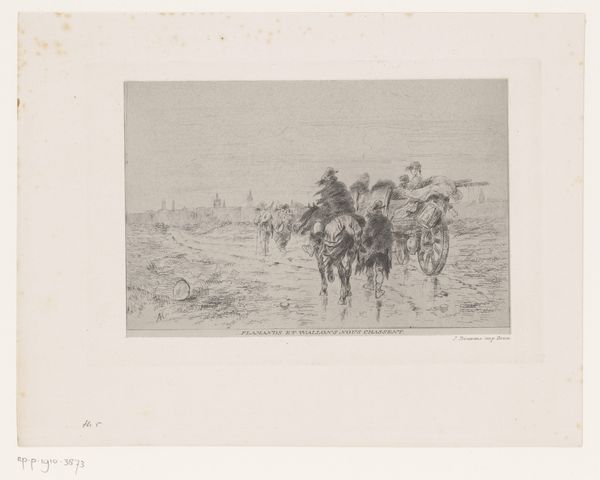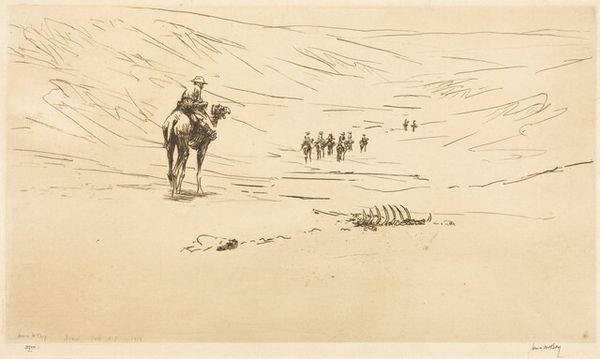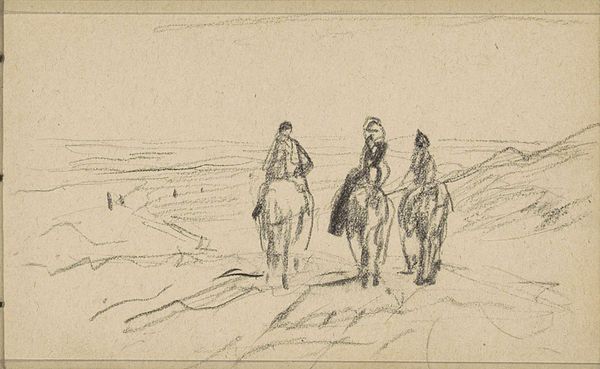
Copyright: National Gallery of Art: CC0 1.0
Curator: Here we have James McBey's etching "Palestine ("Blue Bonnets o'er the Border")" created in 1920. McBey’s impressionistic style lends an almost ghostly feel to the figures depicted. Editor: Ghosts is right! It feels like a fading memory. Is that supposed to be the desert? Everything is bleached out, like sun-baked bones. A group facing away and the lone musical fanfare feels isolated in the wasteland. Curator: The etching depicts soldiers in Palestine during World War I, likely a Scottish regiment given the musical instruments and the parenthetical reference to a Scottish patriotic song in the work's title. It brings forward questions around British colonialism, the performance of identity, and the emotional realities of war. Editor: Colonialism served with a side of bagpipes. How… uplifting. There's a detachment that's disturbing. A small ensemble celebrates something—or mourns someone. It’s eerie that these two factions don't acknowledge each other and the way that one faces the future while the other commemorates the past. Curator: Indeed. Consider the landscape: its vast emptiness could symbolize the perceived barrenness of the colonized land, inviting the "civilizing" mission of the colonizer. It’s stark but effective. It's not really celebrating but is meant as an exercise of British cultural norms on new territory, with McBey acting as recorder for the War effort. Editor: "Effective" feels... mild. It makes me think about the songs they were likely playing, jaunty and probably meant to instill patriotism, completely divorced from the real experience of those on the front lines, just going where they are told. But in that stark style there's an understated honesty. Curator: I think that ambiguity, that tension between tradition and experience, is what makes McBey's work so compelling. Editor: It certainly doesn’t paint war in bright, heroic colors. More like shades of grief and detachment. And, really, what else is there? Curator: It allows us a glimpse into a troubled history. One that resonates in the current geopolitical landscape. Editor: Exactly! It feels incredibly current for an image made over a century ago. Haunting.
Comments
No comments
Be the first to comment and join the conversation on the ultimate creative platform.
